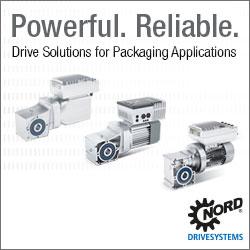The Solar Shift: Why Clean Energy Is Now a Strategic Imperative for U.S. Manufacturers
.jpg)
As energy prices continue to climb, a growing number of U.S. manufacturers are installing solar systems to cut costs, achieve sustainability goals, and support long-term growth. In this article, Wilson Chang, CEO of Sunrock Distributed Generation, examines the rising trend of solar adoption in the manufacturing sector and share expert insights on how to ensure a smooth and successful transition for your business.
As the manufacturing industry transitions rapidly from traditional production lines to highly automated, digitally connected smart factories, electricity demand is soaring. This surge is driven by the power needs of robotics, precision machinery, edge computing, and real-time data systems—key technologies fueling the next generation of industrial innovation.
This sharp rise in energy consumption is colliding with another critical challenge: the escalating cost of grid electricity. Together, these pressures are driving forward-thinking manufacturers to embrace renewable energy—especially onsite solar generation—not just to control costs, but as a strategic investment in long-term sustainability, energy independence, and competitive resilience.
Solar power has emerged as a game-changer for manufacturers. With large, flat rooftops already in place, manufacturing facilities are ideally positioned to harness solar energy at scale. By installing solar panels, companies can produce their own clean electricity on-site, dramatically cutting operational expenses and reducing exposure to volatile energy markets.
Additionally, in markets with net metering legislation, any surplus electricity generated can be fed into the grid, typically resulting in credits or payments for the producer. In certain areas, such as Massachusetts, building owners can also lease their rooftops for solar installations. In these cases, a third-party provider, such as Sunrock Distributed Generation, installs and maintains the system, and the energy produced is sold directly to the utility—providing the property owner with a steady lease income.
Beyond the financial benefits, solar adoption also helps manufacturers to lower their carbon footprint. This directly supports environmental, social, and governance (ESG) goals, while strengthening brand reputation in a marketplace that increasingly values sustainability. It also enhances a company's appeal to environmentally conscious partners—whether they are upstream suppliers, large retailers, or end consumers—who prioritize collaboration with responsible, forward-looking businesses.
Smarter Solar Solutions, Lower Costs
Over the past decade, the cost of solar technology has dropped by over 40%, making it more accessible than ever. At the same time, performance improvements mean solar systems are able to generate more power using less space—and at a lower cost than before.
Advancements in battery storage further enhance the appeal of installing solar by offering another key advantage: energy independence. Batteries store excess solar power generated during the day for use at night or during power outages. Power disruptions—whether due to storms or rolling blackouts—can lead to costly production delays. By integrating battery storage with solar systems, manufacturers gain a dependable backup power source, ensuring continuous operation and protecting against unexpected disruptions.
Overcoming Barriers To Adoption
While the benefits of transitioning to clean, renewable solar energy are clear, many businesses face a significant barrier to adoption: the high initial cost, particularly when solar is combined with battery storage. This upfront expense can be a major challenge, even though the long-term savings and operational advantages typically far outweigh the initial investment.
The first step in overcoming this barrier is to consult a reputable local installer or EPC (Engineering, Procurement, and Construction) firm. These professionals are well-versed in the various federal, state, and local incentive programs that are available and can help identify opportunities to offset costs. By working with a knowledgeable partner and leveraging incentives, businesses can significantly reduce upfront costs and make the transition to solar far more attainable.
Beyond incentives, installers and EPCs can also advise on alternative financing options that eliminate upfront costs altogether, such as Power Purchase Agreements (PPAs). Under a PPA, a third party owns, installs, and manages the solar system, selling the electricity generated to the building occupant—in this example, a manufacturer—at a fixed rate that is typically around 20% less than the cost of grid-supplied electricity. This arrangement allows businesses to reduce energy costs without any upfront investment, making solar adoption financially accessible and sustainable over the long term.
While the benefits of a PPA are clear, they have historically been out of reach for most small and mid-sized businesses, largely because the finance industry prioritized larger, utility-scale projects or required credit-rated entities to sign these PPAs. Today’s that is changing. New solutions are emerging that are tailored to meet the needs of these operators. Sunrock Distributed Generation is at the forefront of this shift, providing flexible financing options, including leasing agreements and PPAs, that enable small and mid-sized businesses to access the cost savings and sustainability benefits of clean, renewable solar energy.
Summing Up
Adopting solar and energy storage solutions presents manufacturers with a powerful opportunity to reduce both their environmental footprint and operating expenses. With solar technology costs declining, utility rates increasing, and new, innovative financing options emerging, switching to solar is no longer just a smart decision—it is a transformative step that enables manufacturers to create a more sustainable and financially stable future.
For more information, visit: https://www.sunrockdg.com/.
Comments (0)
This post does not have any comments. Be the first to leave a comment below.
Featured Product

